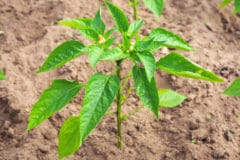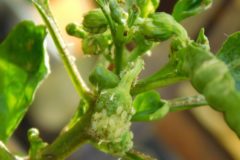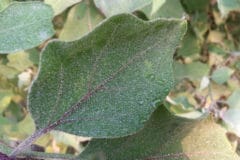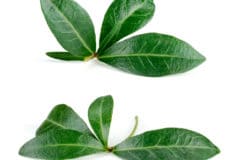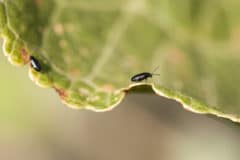About Leaf Curl
The term ‘leaf curl’ is often used by gardeners and farmers to describe a common symptom in plants. Peppers and tomatoes are notorious for exhibiting leaf curl when something is wrong.
It can manifest different ways. Sometimes it begins at the top of the plant. Other times it affects all of the foliage. The leaves curl down spiraling in on themselves. Sometimes the tips of the leaves curl up at the same time creating a crumpled look. The leaves may bubble, turn a different color, or eventually die and fall off.
Diagnosing leaf curl is only half the battle. Gardeners must find out what is causing this symptom and address the root problem. It can be a number of different issues.
- Pests
- Disease
- Water Stress
- Transplant Shock
- Over-Pruning
Pests
Inspect the affected plant for bugs. Pest insects tend to cluster on the undersides of the leaves. Bugs that feed on your foliage will cause leaf curl just from physical damage. If a leaf was fed on as it grew it will develop a twisted and curled appearance. Here are just a few common pepper plant pests.
Aphids are small beetles that can be difficult to see. They come in many colors including green, brown, yellow, red, and black. These bugs excrete a sticky substance that trails along behind them.
Mites can be hard to find because they are so small. They typically look like little brown or black dots that move when prodded.
Plant-eating thrips are small winged insects with long bodies. They can be almost transparent looking. Thrips damage tends to curl and create white patches on leaves. Thrips can carry tomato spotted wilt virus.
The positive aspect of finding bugs on your curling pepper plants is that something can be done about it. The garden is an ecosystem and where there are plant-eating insects there should also be predatory insects. In a highly diverse garden, most pest situations sort themselves out before the plant is badly damaged.
In the event of excess pest damage, consider purchasing colonies of predatory insects like ladybugs, praying mantis, or predatory mites.
Disease
A disease issue is the most difficult to diagnose and correct. One reason to keep pest populations down is their ability to spread disease. If you live in a highly agricultural area where commercial peppers are grown, the chances of disease reaching your garden are higher. Take extra care to encourage diversity in the garden. Be observant for the first signs of virus-related problems.
Mosaic viruses can be identified by the mosaic-style pattern left behind on the curled foliage. Different strains affect the plants differently. The curly top disease affects the tops of plants causing leaf curl and yellowing. These diseases are viral not fungal.
Unlike some fungal disease that can be remedied, viruses are incurable. Rule out all other causes of leaf curl before concluding that you have a virus and pulling your plants. If you do have a viral disease, pull the affected plants and sanitize all your garden tools to avoid spreading it.
Water Stress
Over or under watering causes stress to peppers. These fruits are sensitive and require consistent moisture. Keep the soil moist but avoid allowing water to pool. Maintain good drainage in your garden soil and stick to a watering schedule for the healthiest pepper plants.
Transplant Shock
When it’s time to bring starts from the greenhouse or nursery to the garden, make sure they are ready. If plants experience drastic changes, leaves will curl and growth will slow way down. Always make sure that plants are well acclimated before transplanting.
Acclimating seedlings is the process of introducing them to direct light, temperature changes, and wind. Elements they will not be used to if sprouted indoors or in a greenhouse.
Over Pruning
In some cases, gardeners can get carried away with pruning and damage plants. Try not to take more than one-third of the plant’s foliage at any time. Prune a little bit each day over a longer period rather than doing one drastic pruning. The time between cuttings will allow the plant to recover and re-direct energy.


